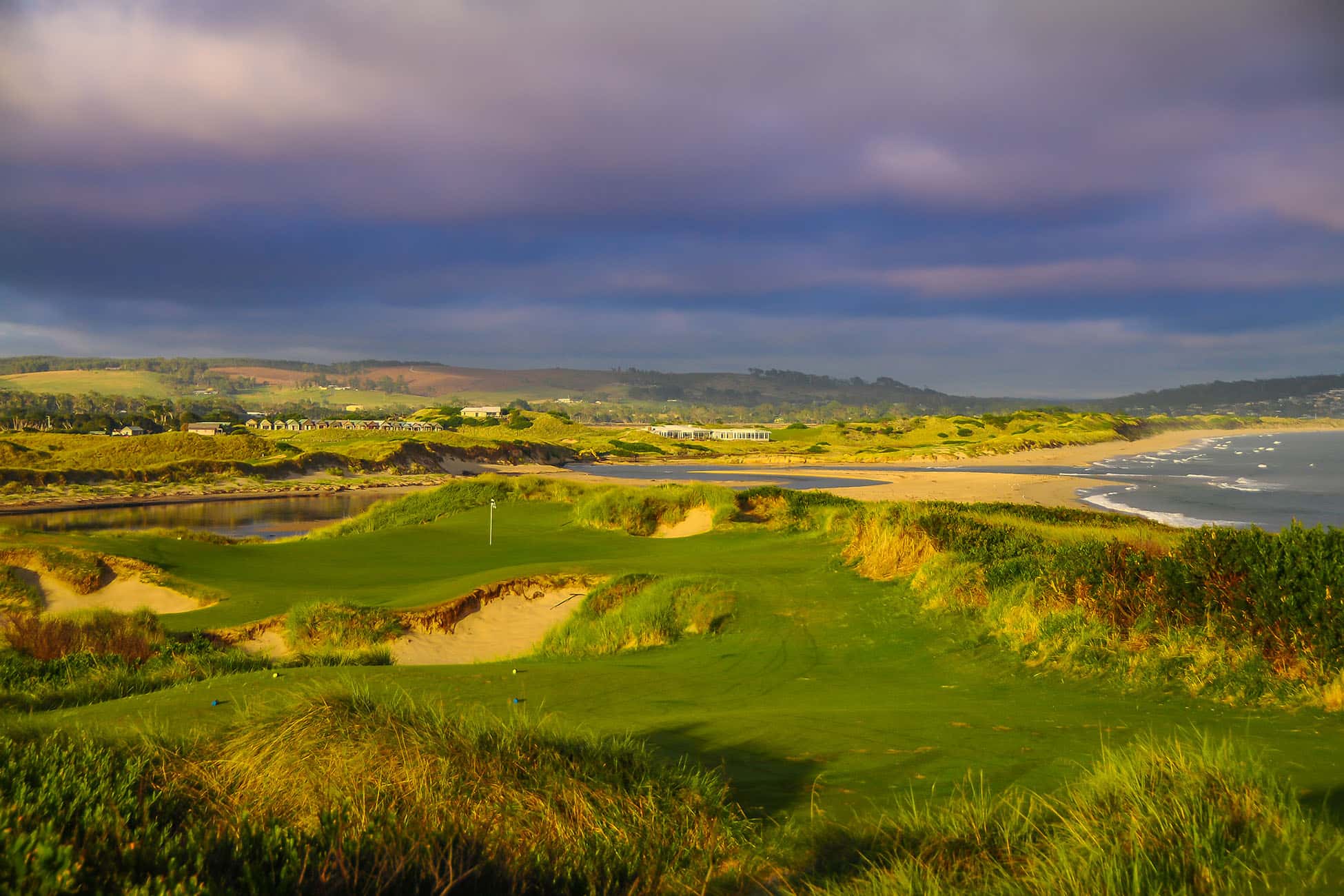 Hole 4 at Lost Farm
Hole 4 at Lost Farm
A Personalised History- by Travelling Golfer Peter Wood
When Greg Ramsay first identified Barnbougle Farm as a potential golfing site he was looking at the dunes on both sides of the Great Forester River.
It is history now that he had to persist for some time before the farmer even considered opening discussion with him.
But he did and eventually Greg's golfing vision came to pass.
Greg also chose Tom Doak to build the first of two courses he envisioned on the land.
Initially it was thought that Doak might build in the dunes at Lost Farm, where the dunes were bigger, and the landscape larger and more varied.
But the cost of bringing water and other infrastructure to Lost Farm was greater so the first course was built on the west side of the river on a smaller site with tighter dunes.
Doak produced a masterpiece in Barnbougle Dunes which opened in late 2004, and was such as success that the farmer proceeded to build the second course proposed by Ramsay on the Lost Farm site- but without Ramsay and the other investors that had helped fund Barnbougle Dunes.
Lost Farm was designed by Bill Coore from Coore Crenshaw, and I had the privilege of spending time with Coore guiding him around the Lost Farm property for a few days when he first viewed the land, and at various other stages as the course progressed.
At the time I was a significant investor at Barnbougle Dunes, Chairman of the Board, and Financial Controller.
I must admit that while we had always hoped the project would be succesful enough to warrant a second course, and spent a host of days getting to know the dunescape that was Lost Farm- the speed with which it all happened took me by surprise.
In those early days walking around the site Coore explained that the site had so much drama going on with big dunes and sea vistas, that he had to be careful to pace the course routing so that it wasn't all high octane golf. His theory was that great courses built the drama over a stretch of holes, and then slowed you down again.
The property he was given was known as Lost Farm because of a large flattish arena in the middle of the dunes where stock apparently sheltered from the weather...
Coore used this flattish land to temper the excitement raised in the spectacular dunes, and created solid strategic holes to complement others that are right in your face.
The first area of Lost Farm I showed Coore was a large crater like sandy dune where the green of the par 5 eighth hole now resides.
It was always going to be a great golf hole but it was interesting to see how it evolved from being the site of a long par 4, and a par 3 across the crater, and then eventually a classic par 5.
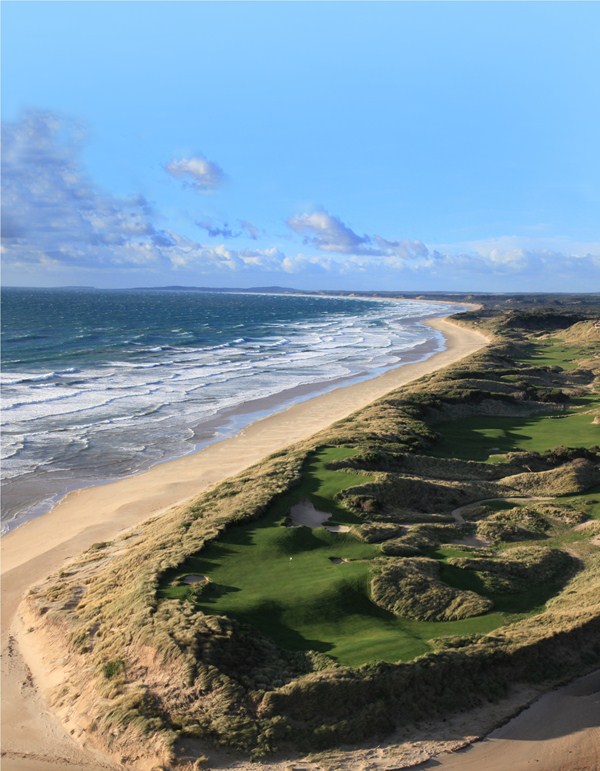 Aerial view of Lost farm
Aerial view of Lost farm
When Bill Coore was working through his routing on one of those early visits I had the good fortune to be discretely assisting when I was called to give an opinion.
Now I know he was just being nice to me, but he sought my opinion on alternative routings he was considering for what is now the 14th hole.
Not being completely dopey I immediately offered the sincere response suggesting the green be sited on the primary dune by the sea.
A hole was born and it was called Peter's hole- well for a while anyway.
And it is a world class short par 4.
Wasn't that nice of Mr Coore?
As the course took shape I also had the opportunity to become the playing help testing shots in the wind and helping to determine stategy.
On one particualr day I hit a couple of tee shots on the par 4 second hole, and Bill Coore and Dave Axland immediately went out and pegged the position of those drives.
That is now the position of the fairway bunkers on the second hole.
Isn't that cool?
Hole six is a short par 3 with a wide but shallow green which plays predominantly cross wind.
I hit a lot of shots there from different positions to help with tee positioning and greenside bunkers.
Barnbougle Lost Farm- Accommodation & Course- Report by Travelling Golfer Ian Greenwood
Barnbougle Dunes and its sister course Lost Farm are located on the north-east cost of Tasmania, an easy 80 minute drive from Launceston Airport.
Both are rated in the world’s top 100 golf courses and the architects – Tom Doak (Barnbougle) and Coore/Crenshaw (Lost Farm) - have done magnificent jobs.
The courses are located on heaving sand dunes with a seaside routing and are reminiscent of the great Irish courses such as Lahinch and Ballybunion.
There are two styles of accommodation on site – cabins adjacent to the Barnbougle Dunes course and a hotel resort at Lost Farm.
The resort has a restaurant with outstanding views of the coast, a spa which also looks over the coast and the 15th hole, and a spike bar and golf shop.
Barnbougle Dunes also has a bar, restaurant and golf shop.
Coore’s routing of Lost Farm has a superb mix of holes across flatter paddocks and a diverse group of holes weaving through expansive valleys.
The first seaview experience comes at the beautiful 4th hole par 3 which overlooks Barnbougle Dunes in the distance.
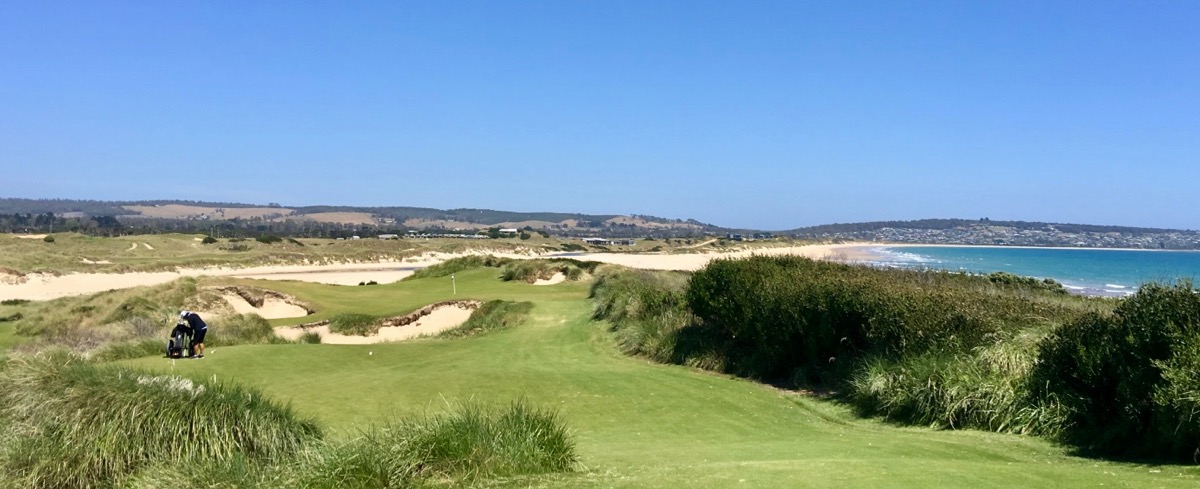
The beautiful 4th hole par 3 at Lost Farm
The next hole is a monstrous 400m+ par four that curves along the estuary towards a massive green, high up in the distance.
From the tee the green is barely visible as the majority of the hole is hidden by a 60-foot dune that must be carried if you hope to reach the green in two.
After an average drive, I hit a long and low runner which skirted the left side of the green and then rolled sharply way over to the right edge.
Very happy with a two-putt from there!
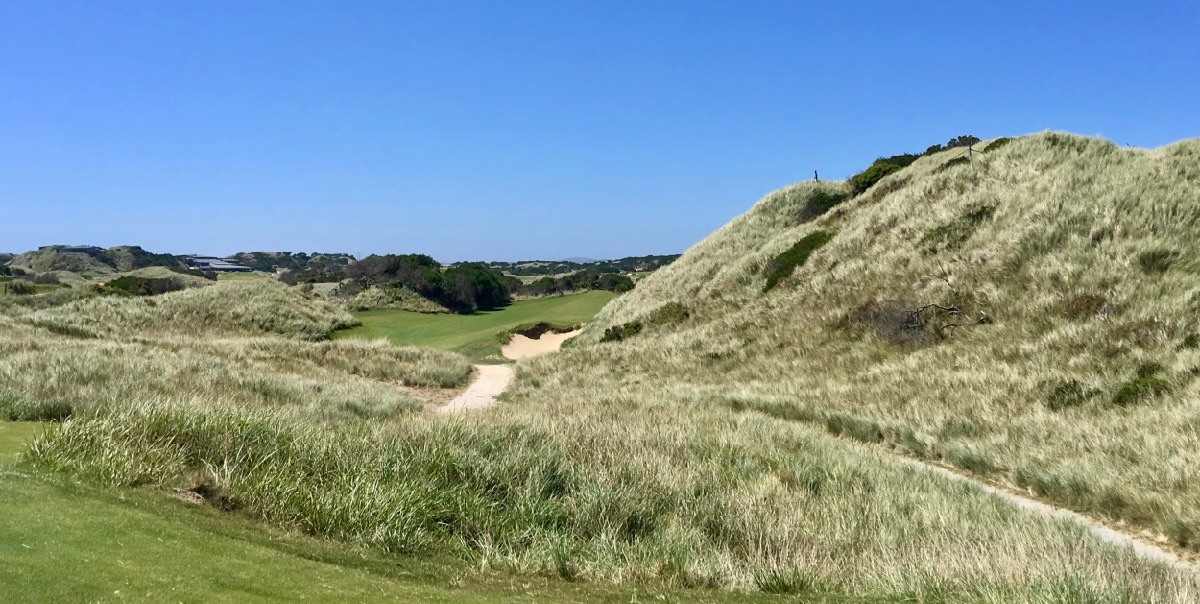
The number one rated hole at Lost Farm, the par 4 5th.
The last two ocean holes are the 14th and 15th, which are squeezed between Bass Strait and an 80-foot sand ridge which has the Lost Farm restaurant and health spa sitting on top.
The 14th is a drivable par four for big hitters.
It has a narrow green that is best approached from the right side of the fairway by the average golfer.
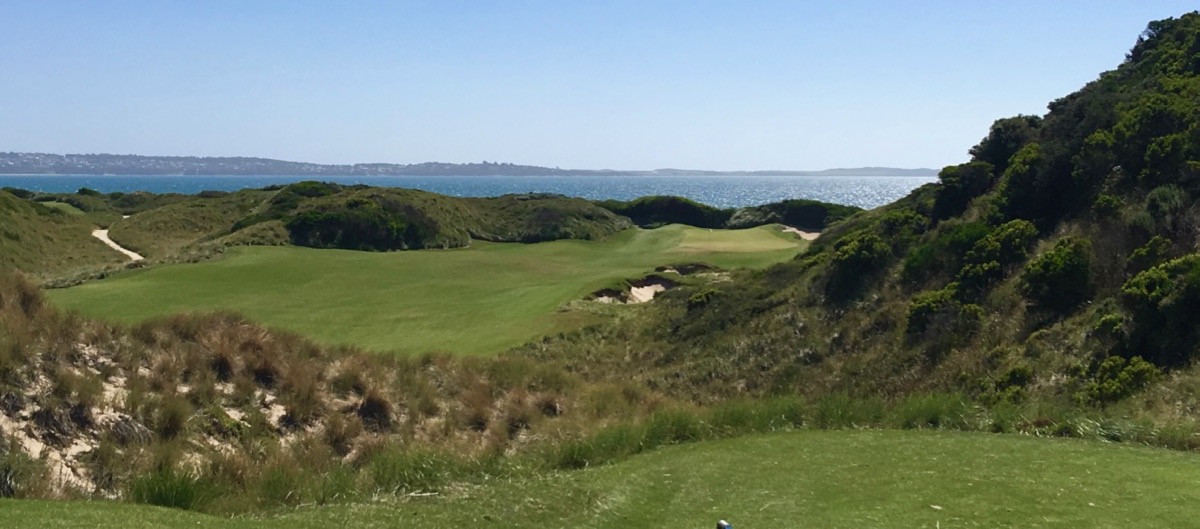
The short par 4, 14th hole at Lost Farm
The 15th is a dramatic and long par three that is made even longer by the prevailing sea winds.
It drops from an elevated tee toward a green at the bottom of a mammoth ridge.
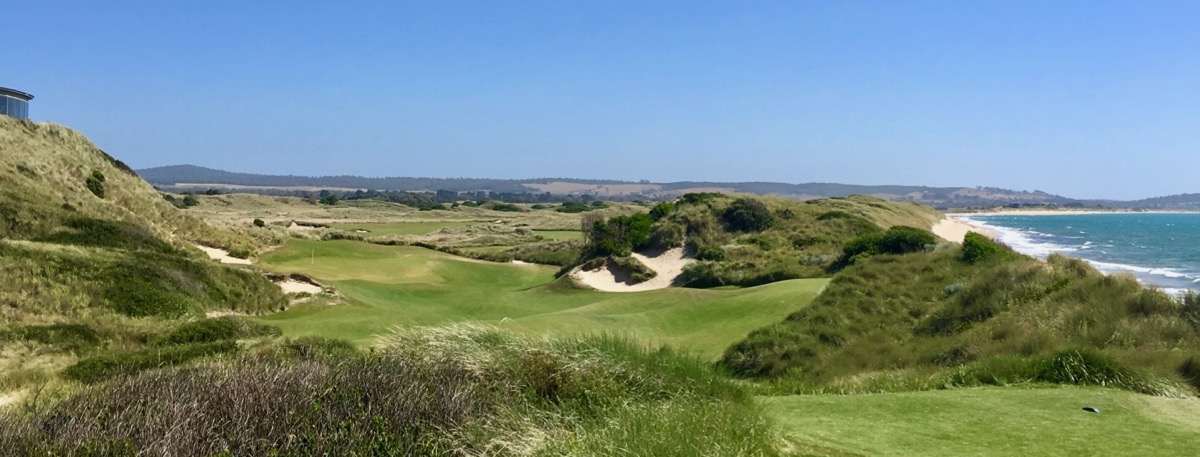
The dramatic par 3, 15th hole at Lost Farm
The closing hole is another imposing 400 metre long par 4 that heads back to the clubhouse.
Walking away with a par is a very satisfying way to finish the day.
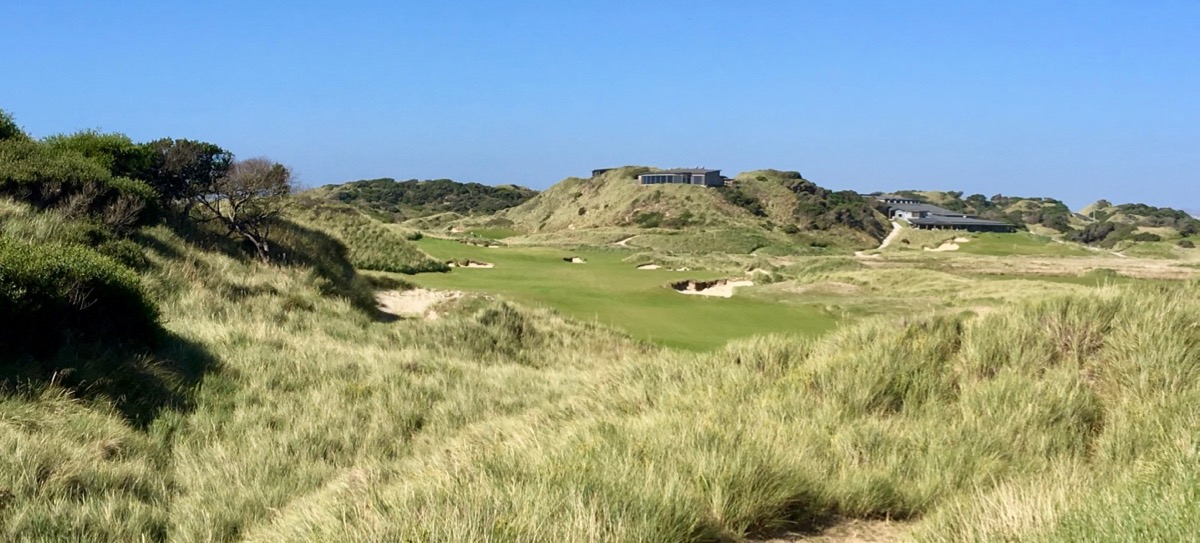
The long par 4 18th hole at Lost Farm
Lost Farm has an unusual quirk in that it has two spare par 3 holes which are in play and on the scorecard.
They are both short but picturesque holes – number 13a on top of sand dunes and number 18a that is in front of the spike bar.
Hole 18a is a great betting hole to finish the day!
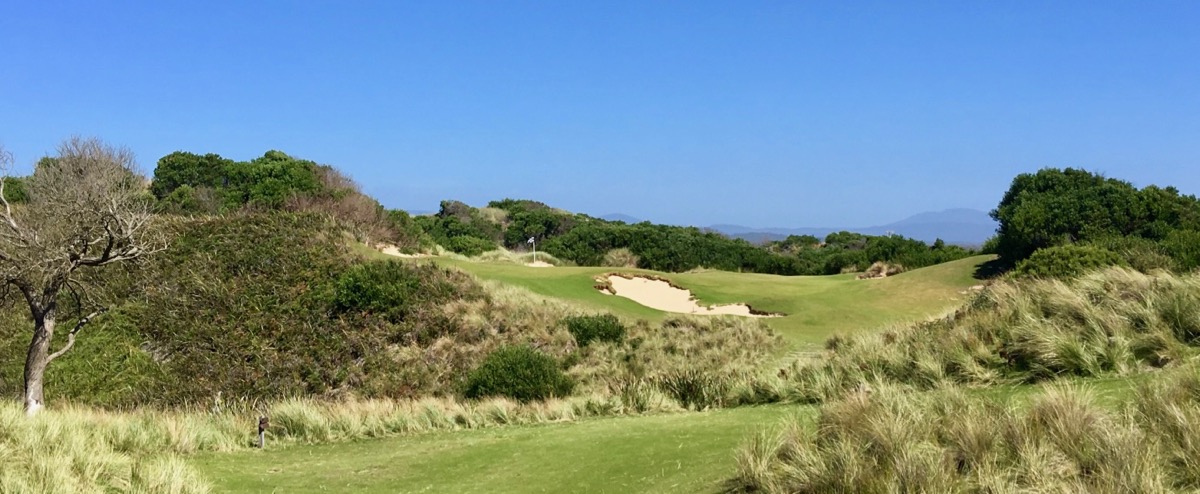
One of two optional extra holes at Lost Farm – the short par 3 & 13a
I loved Lost Farm and found it a little easier than Barnbougle Dunes.
It's wider fairways will suit most golfers but the difficulty of both courses is dramatically affected by the strength of the wind, which always blows!
I played the Terra Cotta tees on both courses (second hardest after the black tees).
The slope rating of these tees on Lost Farm is 124 and on Barnbougle Dunes 128.
However, I found Barnbougle Dunes much more difficult- especially as it was far windier on the day we played.
What’s great about Barnbougle Dunes is that despite the two courses nearly touching at the mouth of the estuary, they are very different and offer contrasting golf experiences.
The two courses are a “must-play” on any golfers list whether you are from Australia or any country worldwide.
Ian Greenwood, February 2017
Golf Tours
The Travelling Golfer can tailor golf tours to Barnbougle and King Island for your group or for individual travellers.
See Destinations: Barnbougle Dunes & King Island
Enquiries
For further information on golf tours please enquire here:

